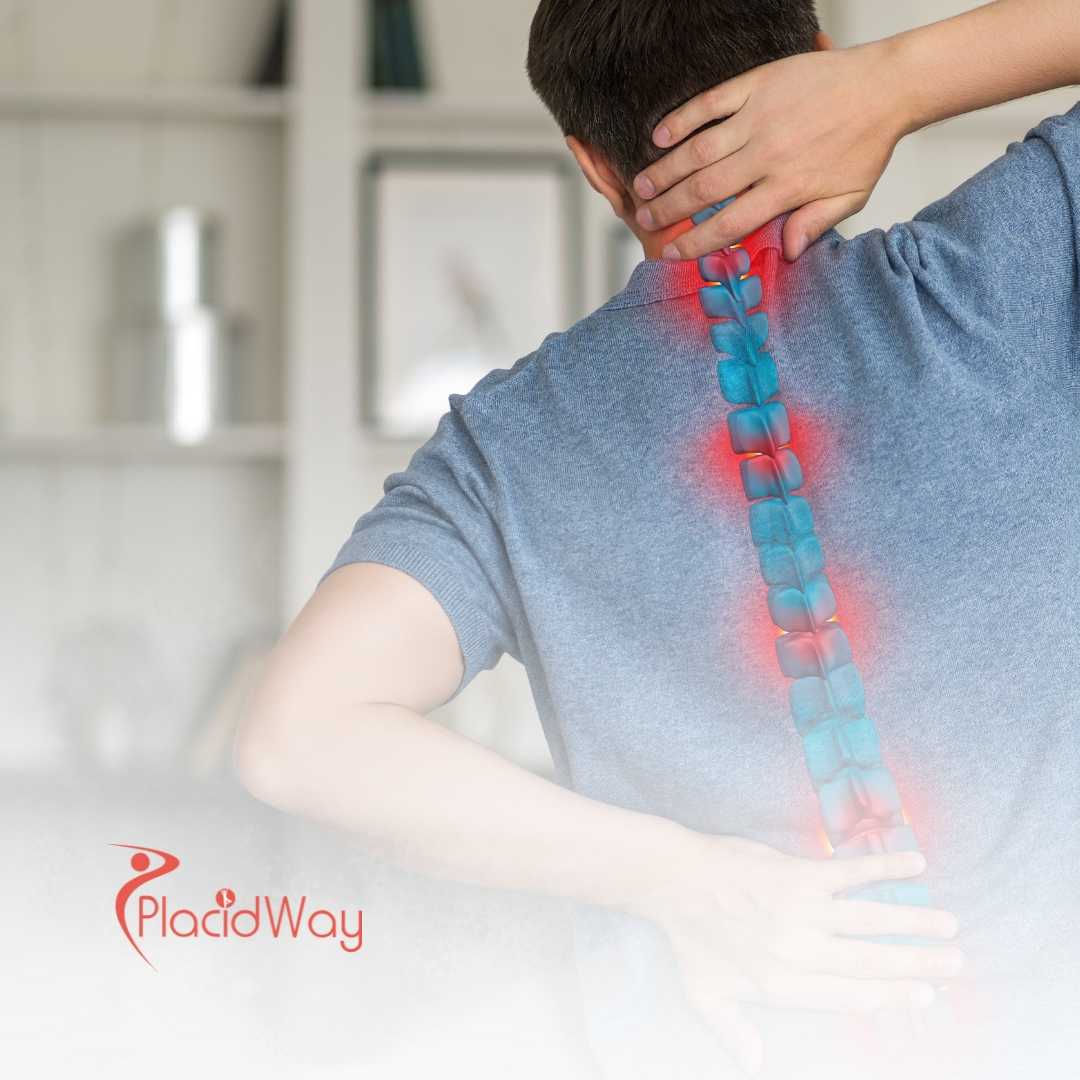
Unlocking Health: Your Comprehensive Guide to Chelation Therapy for Heavy Metal Detoxification
Are you experiencing persistent fatigue, mysterious aches, or neurological symptoms that doctors struggle to diagnose? It’s possible that heavy metal accumulation in your body could be a contributing factor. Many people worldwide are discovering the potential benefits of Chelation Therapy as a way to detoxify their bodies and regain vitality. This in-depth guide will walk you through everything you need to know about this specialized treatment, from understanding its purpose and process to exploring top international destinations for care.
Chelation therapy involves the administration of substances that bind to heavy metals, forming a complex that the body can then excrete. Often sought by patients looking for effective detoxification methods or relief from symptoms linked to environmental toxins, it’s a procedure with specific medical applications. If you've been searching for answers to "how to detox heavy metals," "chelation therapy benefits," or "where to get chelation therapy," you're in the right place. We'll explore who can benefit, what to expect, and why more people are considering treatment options abroad for quality and affordability.
Understanding Heavy Metal Toxicity: Common Symptoms
Heavy metal toxicity can manifest in a bewildering array of symptoms, often making it difficult to pinpoint the underlying cause. Many patients describe feeling "off" without a clear explanation, leading to years of frustration. Common symptoms of heavy metal poisoning can vary depending on the specific metal and the level of exposure, but generally include:
- Neurological Issues: Chronic headaches, brain fog, memory loss, difficulty concentrating, tremors, numbness or tingling in extremities (neuropathy), mood swings, anxiety, depression, irritability.
- Fatigue and Weakness: Persistent tiredness, lack of energy, muscle weakness, unexplained aches and pains, fibromyalgia-like symptoms.
- Digestive Problems: Nausea, vomiting, abdominal pain, diarrhea, constipation, irritable bowel syndrome (IBS) symptoms.
- Immune System Dysfunction: Frequent infections, allergies, autoimmune conditions.
- Cardiovascular Problems: High blood pressure, irregular heartbeat (though direct chelation for heart disease is debated, reducing metal burden can support overall health).
- Kidney and Liver Dysfunction: Impaired organ function, unexplained kidney pain.
- Skin Issues: Rashes, dermatitis, unexplained skin irritations.
- Developmental Issues (in children): Learning disabilities, behavioral problems, developmental delays (often linked to lead or mercury exposure).
If you've been searching "symptoms of mercury poisoning" or "signs of lead exposure," and these resonate, it's crucial to seek medical evaluation for proper diagnosis and heavy metal testing.
What Causes Heavy Metal Accumulation in Your Body?
Understanding how heavy metals enter our bodies is key to prevention and treatment. It's often not a single large exposure, but rather a cumulative effect of smaller, everyday contacts that lead to significant build-up. Common sources of heavy metal exposure include:
- Environmental Pollution: Industrial emissions, contaminated air, water (e.g., lead pipes, industrial runoff), and soil can expose us to metals like lead, mercury, cadmium, and arsenic.
- Contaminated Food: Fish (especially larger, long-lived species) can contain high levels of mercury. Rice can absorb arsenic from contaminated soil. Vegetables grown in polluted soil can pick up various metals.
- Old Dental Amalgam Fillings: These "silver" fillings contain mercury, which can be released as vapor and absorbed by the body over time. Many patients search for "mercury detox dental" due to these concerns.
- Occupational Exposure: Certain professions, such as mining, welding, manufacturing, and working with batteries or pesticides, carry a higher risk of heavy metal exposure.
- Household Products: Some paints (especially older ones), plastics, and even toys can contain lead or cadmium.
- Medications and Supplements: Rarely, some improperly manufactured supplements or traditional remedies can be contaminated with heavy metals.
- Smoking: Tobacco smoke contains cadmium and lead.
The human body has natural detoxification pathways, but chronic, low-level exposure can overwhelm these systems, leading to accumulation and health issues.
Types of Chelation Therapy: Finding the Right Approach
Chelation therapy isn't a one-size-fits-all treatment. The type of chelating agent used depends on the specific heavy metal being targeted and the patient's individual health profile. The most common chelating agents include:
- EDTA (Ethylenediaminetetraacetic Acid): Often administered intravenously, EDTA is commonly used to chelate lead and cadmium. It's sometimes researched for other uses, but its primary established use is for heavy metal poisoning. Patients may search "EDTA chelation for lead."
- DMSA (Dimercaptosuccinic Acid) / Succimer: Available orally, DMSA is very effective for lead and mercury poisoning. It's often preferred for children due to its oral administration and lower side effect profile compared to some other agents. Search terms like "DMSA for mercury detox" are common.
- DMPS (2,3-Dimercapto-1-propanesulfonic acid): Administered intravenously or orally, DMPS is highly effective for mercury and arsenic removal. It's often chosen for more severe mercury toxicity cases. Patients looking for "DMPS chelation therapy" are often concerned about mercury.
- D-Penicillamine: Primarily used for copper overload (Wilson's disease) and sometimes for lead poisoning.
The choice of agent, dosage, and duration of therapy is determined by a physician after comprehensive testing to identify the specific metals and their levels in the body. Treatment protocols can range from a few weeks to several months, depending on the severity of the toxicity.
Is Chelation Therapy Right for You? Eligibility and Assessment
Before undergoing chelation therapy, a thorough medical assessment is crucial. This is not a treatment to be undertaken lightly or without proper medical supervision. Eligibility typically hinges on a few key factors:
- Confirmed Heavy Metal Toxicity: The most important step is diagnostic testing. This usually involves specialized urine tests (often provoked urine tests after a chelating agent is given), blood tests, or hair mineral analysis to identify and quantify the levels of specific heavy metals in your body. Patients often ask, "how to test for heavy metals."
- Presenting Symptoms: While testing confirms the presence of metals, the decision to treat is often based on correlating those levels with your symptoms and overall health status.
- Overall Health Condition: A comprehensive medical history, physical exam, and blood work (including kidney and liver function tests) are necessary to ensure you can safely undergo the treatment. Individuals with severe kidney disease, liver disease, or certain heart conditions might not be suitable candidates or may require modified protocols.
- Physician Consultation: A qualified physician, often an environmental medicine specialist, naturopathic doctor, or integrative medicine practitioner experienced in chelation therapy, must evaluate your case and determine the appropriate treatment plan.
It's important to differentiate between medically necessary chelation for diagnosed heavy metal poisoning and "detox" protocols not backed by strong scientific evidence. Always consult with a healthcare professional.
What to Expect: Recovery and Long-Term Wellness After Chelation Therapy
Chelation therapy is not a quick fix; it's a process that often requires multiple sessions over several weeks or months. During and after treatment, patients can expect:
- Immediate Post-Treatment: You might experience mild fatigue, headache, or nausea after an IV session, especially early in the treatment. Oral chelation typically has fewer immediate side effects.
- Nutritional Support: Chelating agents can sometimes remove beneficial minerals along with heavy metals. Therefore, a crucial part of any chelation protocol is comprehensive nutritional supplementation (e.g., magnesium, zinc, selenium, vitamin C) to replenish essential nutrients and support detoxification pathways. This is vital for "heavy metal detox side effects" management.
- Symptom Improvement: Patients often report a gradual reduction in symptoms like brain fog, fatigue, and pain as metal levels decrease. This improvement can take weeks or even months, depending on the severity of toxicity and individual response. Think of it like slowly draining a very full bathtub – it takes time.
- Lifestyle Adjustments: To prevent re-accumulation, doctors will advise on minimizing future exposure, which might include dietary changes, filtering water, or even addressing environmental factors in your home or workplace.
- Follow-up Testing: Regular testing is usually conducted to monitor metal levels and adjust the treatment plan as needed.
Long-term wellness after chelation therapy involves ongoing vigilance against re-exposure, a healthy diet, and continued support for your body's natural detoxification systems. Many patients find significant improvements in their quality of life, feeling more energetic and mentally clear.
Navigating Risks and Side Effects of Chelation Therapy
While effective, chelation therapy is a medical procedure and carries potential risks and side effects. It’s vital to be aware of these and to undergo treatment under the strict supervision of a qualified medical professional.
- Common Side Effects: These are usually mild and temporary, including nausea, vomiting, headache, dizziness, fatigue, and pain or irritation at the IV injection site. Some patients report flu-like symptoms as their body processes the released toxins.
- Mineral Depletion: Chelating agents can bind to and remove essential minerals (like calcium, magnesium, zinc, copper) along with toxic metals. This is why proper supplementation before, during, and after therapy is critical to prevent nutrient deficiencies. This is a common concern when searching for "chelation therapy dangers."
- Kidney and Liver Strain: The kidneys and liver are responsible for processing and eliminating the chelated metals. In rare cases, especially with pre-existing conditions or improper dosing, chelation can put a strain on these organs. Regular monitoring of kidney and liver function is essential.
- Allergic Reactions: As with any medication, there is a risk of allergic reaction to the chelating agent, ranging from mild skin rashes to more severe anaphylaxis.
- Hypocalcemia (Low Calcium): EDTA, in particular, can lower calcium levels, which can be dangerous if not monitored. This is why it's carefully administered.
- Dehydration: Adequate hydration is crucial to help the body excrete the chelated metals and prevent kidney strain.
Reputable clinics and practitioners will thoroughly assess your health, monitor you during treatment, and manage any side effects. Never attempt chelation therapy with unprescribed substances or without professional medical guidance.
Worldwide Chelation Therapy Costs: A Comparative Look
One of the primary reasons patients consider medical tourism for chelation therapy is the significant cost difference. The overall cost depends on the number of sessions required, the type of chelating agent, the complexity of your case, and whether additional treatments (like nutrient IVs) are included. Here’s a comparative look at approximate costs per session:
| Country | Estimated Cost Per Session (USD) | Typical Package (e.g., 10 sessions) |
|---|---|---|
| United States | $300 - $1,000+ | $3,000 - $10,000+ |
| United Kingdom | $250 - $700+ | $2,500 - $7,000+ |
| Germany | $200 - $600 | $2,000 - $6,000 |
| Mexico | $150 - $400 | $1,500 - $4,000 |
| Turkey | $150 - $350 | $1,500 - $3,500 |
| India / Thailand | $100 - $300 | $1,000 - $3,000 |
Please note: These are estimated costs and can vary based on clinic reputation, location within the country, specific chelating agents used, and whether the quote includes pre/post-tests and accommodation. Always request a detailed quote.
Why Consider Chelation Therapy Abroad for Your Health Journey?
The appeal of medical tourism for chelation therapy extends beyond just cost savings. Patients often find compelling reasons to look internationally:
- Affordability: As seen in the cost comparison, the price of chelation therapy can be substantially lower in countries like Mexico, Turkey, India, or Thailand, making the treatment accessible to a wider range of budgets.
- Access to Specialized Care: Some countries are home to renowned clinics specializing in integrative or environmental medicine, offering extensive experience with chelation therapy that might be harder to find or less commonly offered in a patient's home country.
- Reduced Waiting Times: In some public healthcare systems, waiting lists for specialized treatments can be long. Abroad, patients often experience immediate access to consultations and treatment.
- Comprehensive Packages: Many international clinics offer all-inclusive packages that bundle treatment, accommodation, airport transfers, and even excursions, simplifying the travel and treatment process.
- Privacy and Relaxation: Traveling abroad can offer a sense of privacy and the opportunity to recover in a more serene environment, away from the stresses of daily life, which can be beneficial for overall healing.
- Holistic Approach: Many international clinics integrate chelation therapy with other wellness treatments, nutritional guidance, and lifestyle modifications, offering a more holistic approach to detoxification and health.
For those searching "affordable heavy metal detox" or "best clinics for chelation therapy overseas," the benefits of going abroad are clear.
Which Countries Offer the Best Value for Chelation Therapy?
Based on factors like cost, quality of care, and patient experience, several countries stand out as popular destinations for chelation therapy:
- Mexico: Particularly areas near the US border (e.g., Tijuana, Cancun), offer state-of-the-art integrative clinics with competitive pricing and experienced practitioners. It's a top choice for "chelation therapy Mexico."
- Germany: Known for its advanced medical technology and a strong tradition in naturopathic and integrative medicine, Germany offers high-quality chelation therapy, often with a holistic approach, at costs generally lower than in the US.
- Turkey: With rapidly developing medical infrastructure and a strategic location, Turkey provides excellent medical services, including chelation therapy, at highly competitive prices.
- India: A global hub for medical tourism, India boasts world-class hospitals and clinics with highly skilled doctors, offering chelation therapy at some of the lowest prices internationally.
- Thailand: Combining high-quality medical care with beautiful tourist destinations, Thailand offers a relaxed environment for treatment and recovery, with competitive pricing for various medical procedures.
When selecting a country, consider not just the cost, but also the clinic's accreditations, doctor's qualifications, language compatibility, and ease of travel.
Preparing for Your Journey: What to Expect When Traveling for Chelation Therapy
Embarking on a medical journey abroad requires careful planning. Here’s a general overview of what to expect:
- Pre-Travel Consultation: Most reputable clinics will offer virtual consultations to review your medical history and initial test results, helping you understand the proposed treatment plan and estimated duration.
- Travel Logistics: You'll need to arrange flights, accommodation, and local transportation. Many medical tourism facilitators like PlacidWay can assist with these arrangements.
- Initial Assessment Upon Arrival: Once you arrive, you'll undergo in-person consultations, physical examinations, and potentially further diagnostic tests to confirm the treatment plan.
- Treatment Schedule: Chelation therapy usually involves multiple sessions, often daily or several times a week, over a period of weeks. You'll need to factor in this time, allowing for rest between sessions.
- Nutritional Support and Lifestyle: You'll likely receive dietary recommendations and possibly supplemental IVs to support your body during detoxification.
- Language and Culture: While many international clinics cater to English-speaking patients, being prepared for some cultural differences and having access to translation services can enhance your experience.
- Post-Treatment Care: Discuss follow-up care and any required medications or supplements to take home with your treating physician.
It's like planning any significant trip, but with your health as the primary focus. Ensure all your documentation, including passports, visas, and medical records, are in order.
Ensuring Safety and Quality: How to Choose a Clinic Abroad for Chelation Therapy
Your health is paramount. When seeking chelation therapy abroad, it's crucial to ensure you choose a safe, reputable, and high-quality clinic. Here's how:
- Accreditation: Look for international accreditations (e.g., JCI - Joint Commission International) or local government health body accreditations, which indicate adherence to international standards of care.
- Physician Credentials: Verify the qualifications, experience, and specialization of the doctors who will be overseeing your treatment. Do they have specific training in environmental medicine or chelation therapy?
- Clinic Specialization: Choose clinics that specialize in chelation therapy and heavy metal detoxification, rather than those offering it as a sideline service.
- Patient Reviews and Testimonials: Research online reviews, patient testimonials, and ask for references. Real-world experiences can provide invaluable insights.
- Transparency: A good clinic will be transparent about their treatment protocols, potential risks, costs, and what's included in their packages.
- Communication: Ensure clear and prompt communication with the clinic before, during, and after your treatment.
- Medical Tourism Facilitators: Companies like PlacidWay specialize in vetting international clinics and connecting patients with trusted providers. They can offer unbiased advice, help with communication, and streamline the entire process, minimizing risks.
Don't be afraid to ask detailed questions about safety protocols, emergency procedures, and post-treatment follow-up. A trustworthy clinic will welcome your inquiries.
Real Patient Journeys: Success Stories with Chelation Therapy Abroad
While individual results vary, countless patients have shared their profound positive experiences with chelation therapy, especially those who sought treatment abroad. These stories often highlight a journey from chronic, unexplained illness to renewed health and vitality.
Imagine Sarah, a 45-year-old from Canada who battled debilitating fatigue and "brain fog" for years. After discovering high mercury levels from old dental fillings, she found a specialized clinic in Mexico. After a structured chelation protocol, she reported her energy returning, her mind clearing, and her overall zest for life rekindled. She often tells others, "It felt like someone turned the lights back on."
Or consider Mark, a 55-year-old from the UK who experienced inexplicable joint pain and digestive issues. Tests revealed elevated lead levels from occupational exposure. Unable to find affordable, comprehensive treatment at home, he traveled to Germany. His treatment included not just chelation, but also holistic support for his gut and immune system. Mark now lives an active life, free from the chronic pain that once plagued him, praising the integrative approach he received overseas.
These stories, common in medical tourism for chelation therapy, underscore the potential for transformative health outcomes when patients find the right care, regardless of geographical borders. They serve as powerful reminders that taking an active role in seeking solutions, even globally, can lead to a healthier future.
Take the Next Step with PlacidWay
Ready to explore treatment options abroad? Discover top clinics, compare prices, and get a free quote tailored to your needs with PlacidWay.
Live Cell Therapy | Naturopathy | Ayurveda










Share this listing